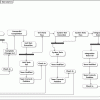Strategic advice to leverage new technologies
Technology is at the heart of nearly every enterprise, enabling new business models and strategies, and serving as the catalyst to industry convergence. Leveraging the right technology can improve business outcomes, providing intelligence and insights that help you make more informed and accurate decisions. From finding patterns in data through data science, to curating relevant insights with data analytics, to the predictive abilities and innumerable applications of AI, to solving challenging business problems with ML, NLP, and knowledge graphs, technology has brought decision-making to a more intelligent level. Keep pace with the technology trends, opportunities, applications, and real-world use cases that will move your organization closer to its transformation and business goals.
Recently Published
Servicing Technical Debt
Just as giving a teenager a credit card without a limit is a guaranteed disaster, letting an organization rack up technical debt without restriction will inevitably lead to an unmaintainable state. The simple reason for this is that without clear cost tradeoffs, the business cannot make the hard decision to give up value today for increased agility tomorrow.
While concepts borrowed from lean manufacturing have long been associated with agile software development methodologies, they have become more en vogue recently. One of these concepts, Kanban, has emerged of late as an overused buzzword.
Agile software development methodologies such as Scrum and XP have grown in popularity over the past 10 years. This growth has coincided with the injection of lean terminology and practices into the software development lexicon. Of course, software development organizations are not drawn to concepts like lean and agile for their own sake. Other underlying goals or deficiencies cause the organization to want to change. Primarily the motivation is the culmination of myriad issues that lead to the inability to deliver software on time or, more important, in a predictable manner.
In last week's Advisor, I began a discussion of SAP's new HANA architecture (see "The Coming Tsunami: In-Memory Databases, Part I," 16 June 2011).
Business architecture is gaining recognition as a game-changing discipline that enables businesses to address major challenges in new and unique ways. Simply put, business architecture allows a business to establish a common vocabulary, shared vision, and a degree of transparency that facilitates initiatives ranging from M&As to the reversal of customer attrition.
I've been saying for some time now that the advent of cloud-based predictive analytics offerings -- such as those from in2Clouds, Predixion Software, and Quiterian -- is an important development due to its potential to stir up the market for data mining and predictive analytics. A Cutter Consortium survey1 in February/March 2011 sheds some light on the use of these products.














